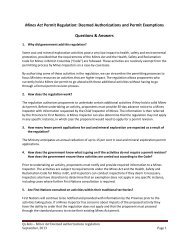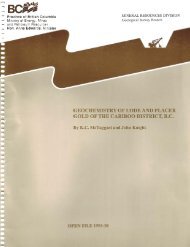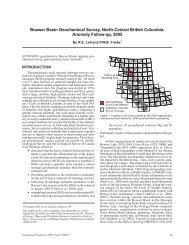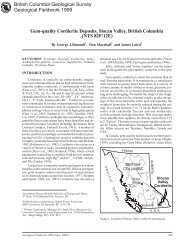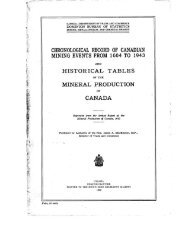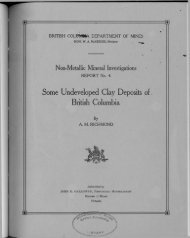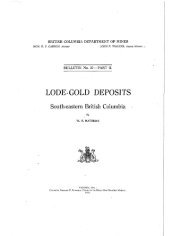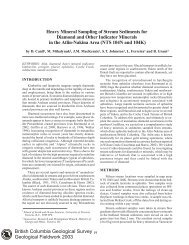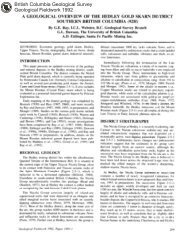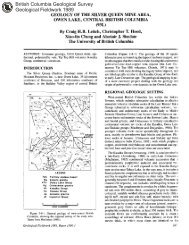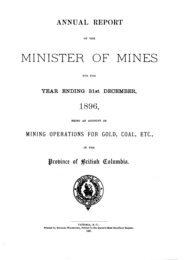PDF version - Ministry of Energy, Mines and Natural Gas
PDF version - Ministry of Energy, Mines and Natural Gas
PDF version - Ministry of Energy, Mines and Natural Gas
You also want an ePaper? Increase the reach of your titles
YUMPU automatically turns print PDFs into web optimized ePapers that Google loves.
Inventory<br />
9.5 SAMPLE TYPE (R27) (E28)<br />
When the Assay category is chosen, the sample type must be identified using one <strong>of</strong> the following:<br />
CODE SAMPLE TYPE AND DEFINITION<br />
AUGR Auger - a sample taken using <strong>and</strong> auger.<br />
BULK<br />
Bulk - a large volume sample collected from one or more sites for assay or metallurgical testing.<br />
It includes limited sampling or mining in initial production stages for plant site <strong>and</strong> operations<br />
testing.<br />
CHIP Chip - a large number <strong>of</strong> small chips or specimens collected over a specific area.<br />
CHNL<br />
Channel - a sample <strong>of</strong> all material collected from a channel <strong>of</strong> specific dimensions across a<br />
sample site.<br />
DIAD Drill Core - a split or other type <strong>of</strong> drill core sample.<br />
GRAB Grab - a single sample normally selected to represent either high or low grade material.<br />
ROCK<br />
Rock - this may be a chip, channel or grab sample which has been analyzed by st<strong>and</strong>ard<br />
geochemical techniques rather than assay techniques.<br />
TRNC Trench - a sample taken from a trench.<br />
****<br />
9.6 QUANTITY(*) (R26)<br />
Unknown - This may only be used when the data is important <strong>and</strong> needs to be included but the<br />
sample type is not known.<br />
Reserves or resources must be quoted in metric tonnes. General or approximate figures are only acceptable where<br />
no other information is available; this should be clearly explained in the comment field. This is not filled in for<br />
Assays.<br />
9.7 COMMODITY/GRADE(*) (R28)<br />
The inventory information can have data on up to six commodities. These should reflect only those commodities<br />
which can be recovered from a deposit. Minor or accessory commodities <strong>of</strong> economic interest can be identified in<br />
the commodities field <strong>of</strong> the Mineral Occurrence section.<br />
Commodities are entered by selecting from the Commodities table (see Appendix II) followed by the grade<br />
(precious metals in grams per metric tonne, other commodities as per cent). Some industrial minerals may be<br />
quoted in kilograms. Commodities entered in the inventory data field, must first be captured as commodities in the<br />
Mineral Occurrence tab <strong>of</strong> the MINFILE/www online coding card. In many <strong>of</strong> the reports, the commodities are<br />
indicated by the st<strong>and</strong>ard two-letter, elemental chemical symbol or two-letter codes (see Appendix II); these are<br />
also used when searching for commodities.<br />
9.8 COMMENTS - INVENTORY (C11)<br />
This is a free-format field to identify information on cut<strong>of</strong>f grades or other data pertinent to the final figures. Unlimited<br />
lines are allowed.<br />
file:///C|/HardcopyManual/10_codeinv.htm (4 <strong>of</strong> 5)2007-09-20 4:09:07 PM



